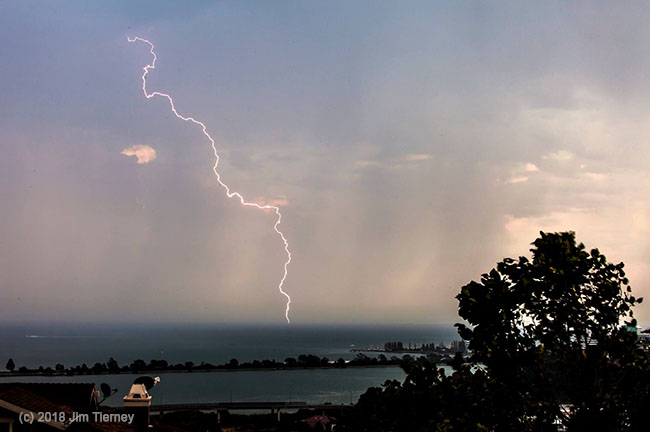As many of you know, I’m an avid time lapse videographer, and the original purpose of our Flicker Free filter was time lapse. I needed a way to deflicker all those night to day and day to night time lapses. I also love shooting long exposure photos.
As it turns out, this was pretty good experience to have when it came to capturing a VERY rare lightning storm that came through San Francisco late last year.
Living in San Francisco, you’re lucky if you see more than a 3 or 4 lightning bolts a year. Very different from the lightning storms I saw in Florida when I lived there for a year. However, we were treated to a definitely Florida-esqe lightning storm last September. Something like 800 lightning strikes over a few hours. It was a real treat and gave me a chance to try and capture lightning! (in a camera)
The easiest way to capture lightning is just flip your phone’s camera into video mode and point in the direction you hope the lightning is going to be at. Get the video and then pull out a good frame. This works… but video frames are usually heavily compressed and much lower resolution than a photo.
I wanted to use my 30mp Canon 5DmarkIV to get photos, not the iPhone’s mediocre video camera.
Problems, Problems, Problems
To get the 5D to capture lightning, I needed at the very least: 1) a tripod and 2) an intervalometer.
Lightning happens fast. Like, speed of light fast. Until you try and take a picture of it, you don’t realize exactly how fast. If you’re shooting video (30fps), the bolt will happen over 2, maybe 3 frames. if you’ve got a fancy 4K (or 8K!) camera that will shoot 60 or 120fps, that’s not a bad place to start.
However, if you’re trying to take advantage of your 5D’s 6720 × 4480 sensor… you’re not going to get the shot handholding it and manually pressing the shutter. Not going to happen. Cloudy with a chance of boring-ass photos.
So set the camera up on a tripod and plugin in your intervalometer. You can use the built-in, but the external one gives you more options. You want the intervalometer firing as fast as possible but that means only once every second. During the day, that’s not going to work.
Lightning And Daylight
The storm started probably about an hour before sunset. It was cloudy, but there was still a fair amount of light.
At first I thought, “once every second should be good enough”. I was wrong. Basically, the lightning had to happen the exact moment the camera took the picture. Possible, but the odds are against you getting the shot.
As mentioned, I like shooting long exposures. Sometimes at night but often during the day. To achieve this, I have several neutral density filters which I stack on top of each other. They worked great for this. I stacked a couple .9 ND filters on the lens, bringing it down 6 stops. This was enough to let me have a 1/2 sec. shutter speed.
1/2 sec. shutter speed and 1 sec. intervals… I’ve now got a 50/50 chance of getting the shot… assuming the camera is pointed in the direction of the lightning. Luckily it was striking so often, that I could make a good guess as to the area it was going to be in. As you can see from the above shot, I got some great shots out of it.
Night Lightning
To the naked eye, it was basically night. So with a 2 second exposure and a 2 second interval… as long as the lightning happened where the camera was pointed, I was good to go. (it wasn’t quite night, so with the long exposure you got the last bits of light from sunset) I did not need the neutral density filters as it was pretty dark.
By this point the storm had moved. The lightning was less consistent and a bit further away. So I had to zoom in a bit, reducing the odds of getting the shot. But luck was still with me and I got a few good shots in this direction as well.
I love trying to capture stuff you can’t really see with the naked eye, whether it’s using time lapse to see how clouds move or long exposure to see water flow patterns. Experimenting with capturing lightning was a blast. Just wish we saw more of it here in SF!
So hopefully this gave you some ideas about how to capture lightning, or anything else that moves fast, next time you have a chance!




